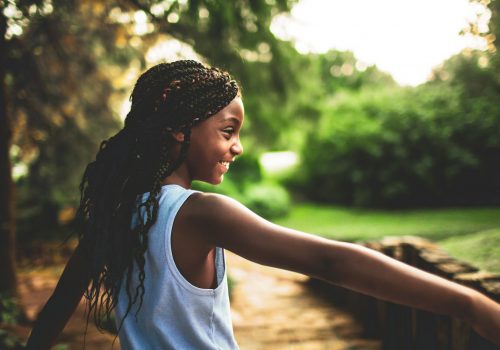Expanding opportunities for children with disabilities in global learning is an intricate yet rewarding endeavor. It requires a thoughtful blend of inclusive education practices, innovative learning methods, and a supportive environment. By integrating diverse perspectives and inclusive content into their educational journey, we can significantly enhance their understanding and appreciation of the global community. Inclusive global education is more than just an academic exercise—it’s about preparing children to engage with the world in meaningful ways. Let’s dive deeper into the practical approaches and methods that can make this a reality for children with disabilities.
Incorporating Diverse Perspectives in Curriculum
To effectively engage children with disabilities, it’s essential to incorporate a wide array of multicultural resources into the curriculum. This can range from books and videos to interactive activities that highlight different cultures and traditions. For instance, using a storybook that features characters from various cultural backgrounds or showcasing a documentary about international festivals can serve as a gateway to these discussions. It’s like opening a window to the world right from their classroom, allowing them to see and feel the vibrancy of global diversity.
Practical Tips for Teachers:
- Select Inclusive Literature: Choose books that reflect a range of cultures and experiences, ensuring representation of children with disabilities within these narratives. For example, “The Name Jar” by Yangsook Choi offers a beautiful perspective on cultural identity and acceptance.
- Utilize Technology: Platforms like Google Earth or virtual reality apps can simulate global travel and provide immersive experiences without leaving the classroom. Apps like “Expeditions” offer a range of virtual field trips that can be tailored to different abilities.
- Create Culturally-Themed Projects: Encourage students to research and present on a culture different from their own, incorporating visuals and storytelling. A project could involve creating a digital collage or video presentation about cultural festivals around the world.
- Guest Speakers and Cultural Ambassadors: Invite community members or international visitors to share their cultural experiences, offering students a direct connection to the world beyond their local environment.
Creating a Supportive and Inclusive Learning Environment
A supportive learning environment is one where all students, regardless of their abilities, feel valued and included. For children with disabilities, this means having access to appropriate resources such as assistive technology and modified learning materials. Consider a classroom where a child with visual impairments uses screen reading software to participate in lessons, or a student with hearing difficulties utilizes captioned videos. These adaptations not only facilitate learning but also promote independence.
Strategies for Inclusivity:
- Implement Universal Design for Learning (UDL): This approach emphasizes flexible teaching methods and materials to accommodate different learning styles and needs. For instance, offering multiple means of engagement and expression can empower students to choose how they learn best.
- Provide Sensory Breaks: Allow children time to regroup with activities like quiet reading or sensory toys to help them manage overstimulation. Creating a sensory corner in the classroom can provide a safe haven for students who need a break.
- Encourage Peer Support: Pair students together for projects to foster camaraderie and mutual assistance, promoting an inclusive atmosphere. Peer buddies can also help in translating cultural concepts into more relatable terms.
- Adapt Learning Materials: Modify textbooks and resources to meet the needs of all students. This could include providing large print versions or audio materials for those who need them.
Engaging Through Experiential Learning
Experiential learning takes education beyond the traditional classroom setting. It’s about immersing students in experiences where they can directly interact with diverse cultures. Imagine a virtual field trip to a museum in Paris, where students can explore exhibits, or an online cultural exchange program where they communicate with peers from another country. These hands-on experiences build empathy and understanding in ways textbooks alone cannot.
Examples of Experiential Learning:
- Virtual Cultural Exchanges: Partner with schools in other countries for regular video calls where students share aspects of their cultures and daily lives. This could include simple greetings in different languages or sharing a favorite local recipe.
- Interactive Workshops: Host workshops where students can learn a traditional craft or cooking style from another culture, adapted for all abilities. This could involve tactile activities like clay modeling or cooking sessions with adaptive equipment.
- Global Issue Simulations: Engage students in role-play activities that simulate international scenarios, such as a UN assembly, to discuss global issues. This helps students understand the complexities of global diplomacy and encourages them to think critically about solutions.
- Cultural Immersion Days: Organize days dedicated to exploring a specific culture through food, music, dance, and storytelling. These events can be adapted to ensure everyone can participate and enjoy.
Building Empathy and Social Skills
Global learning is a powerful tool for building empathy and social skills in children with disabilities. By learning about the challenges and triumphs of people across the globe, they begin to see the world through others’ eyes. Discussions around cultural norms and social issues can foster a sense of empathy, encouraging students to think critically about their roles in a global society.
Activities to Foster Empathy:
- Role-Playing Exercises: Create scenarios where students must navigate social situations from different cultural perspectives, promoting empathy and understanding. For instance, role-playing a marketplace negotiation in various cultures can teach respect and communication skills.
- Story Circles: Organize sessions where students share personal stories related to cultural experiences or challenges, building a community of trust and empathy. These circles can be a safe space for expressing emotions and learning from others’ perspectives.
- Buddy Programs: Pair students with peers from different cultural backgrounds to work on projects, encouraging cross-cultural friendships and understanding. This can also involve mentorship programs where older students guide younger ones through cultural explorations.
- Community Service Projects: Engage students in projects that benefit diverse communities, such as organizing a food drive for a multicultural event or volunteering at a cultural festival.
Overcoming Challenges and Common Mistakes
While the journey to inclusive global learning is rewarding, it isn’t without its challenges. Educators may encounter barriers such as limited resources, resistance to change, or lack of training in inclusive practices. Moreover, a common mistake is treating inclusivity as a one-size-fits-all approach, which can inadvertently marginalize students.
Solutions and Avoidances:
- Continuous Professional Development: Invest in ongoing training for educators to help them adapt to new teaching methods and technologies. Workshops on cultural competency and inclusive practices can be invaluable.
- Tailored Approaches: Recognize and respect the unique needs of each student, avoiding assumptions based on disability. Developing individual learning plans can ensure that each student’s needs are met.
- Community Involvement: Engage parents and community members in the learning process, creating a larger support network for students. This can include parent-teacher meetings focused on cultural awareness and inclusive strategies.
- Resource Allocation: Ensure that resources are equitably distributed and that all students have access to the tools they need for learning. This might involve fundraising or partnerships with local organizations to secure necessary materials.
The Role of Technology in Global Learning
In today’s interconnected world, technology plays a pivotal role in bridging the gap between local and global learning experiences. For children with disabilities, technology can be a game-changer, offering tools that make learning more accessible and engaging.
Innovative Technological Tools:
- Augmented Reality (AR): Use AR apps to bring cultural artifacts and historical sites into the classroom for interactive exploration. For example, students can explore the pyramids of Egypt or the Great Wall of China through AR experiences.
- Language Translation Apps: Facilitate communication during cultural exchanges by providing real-time translation services. Apps like Google Translate can help break down language barriers in classroom discussions.
- Digital Storytelling Platforms: Encourage students to create and share digital stories about their cultural experiences using multimedia tools. Platforms like Storybird allow students to craft narratives that reflect their understanding of different cultures.
- Assistive Technologies: Incorporate tools like text-to-speech software, braille displays, or voice recognition for students with disabilities to access global learning content.
Celebrating Cultural Diversity in Schools
Celebrating cultural diversity within the school environment goes beyond curriculum changes—it’s about creating a culture of respect and appreciation. Schools can host cultural days, where students and their families share music, food, and traditions from their heritage. Such events can be adapted to ensure all students can participate, whether through tactile experiences for those with visual impairments or alternative communication methods for non-verbal students.
Ideas for Cultural Celebrations:
- International Food Festival: Host a tasting event where students and families bring dishes from their cultures, fostering a sense of community and exploration. This can also include discussions about the origin and significance of each dish.
- Cultural Performance Day: Invite students to perform traditional dances or songs from different cultures, with adaptations for all abilities. Performances can be recorded and shared with family members who cannot attend in person.
- Diversity Wall: Create a mural or display where students contribute artwork or stories about their cultural backgrounds and experiences. This can be a dynamic project that evolves throughout the school year.
- Cultural Fair: Organize a fair where students create booths representing different countries, complete with interactive displays and activities.
The Importance of Collaboration and Support Networks
Collaboration between educators, parents, and specialists is vital for the successful implementation of global learning programs for children with disabilities. Building a support network ensures that students receive comprehensive assistance tailored to their individual needs.
Building Effective Support Networks:
- Regular Communication: Hold meetings with parents and specialists to discuss student progress and adapt strategies as needed. Open lines of communication can help address concerns and celebrate successes.
- Peer Mentorship Programs: Encourage older students to mentor younger peers, fostering a sense of community and shared learning. This can include cross-age tutoring where older students assist younger ones with cultural projects.
- Resource Sharing: Create a repository of inclusive materials and resources for educators and parents to access and contribute to. This could be a digital platform where resources are regularly updated and shared.
- Partnerships with Cultural Organizations: Work with local cultural organizations to provide resources and expertise for school programs. These partnerships can enhance curriculum offerings and provide real-world connections.
By embracing these strategies and fostering an inclusive educational environment, we can empower children with disabilities to become active global citizens. Through exposure to diverse cultures and global issues, they can cultivate empathy, enhance social skills, and develop a broader understanding of the world. This approach benefits not only the students but enriches the entire learning community, promoting a culture of respect, diversity, and global awareness.



